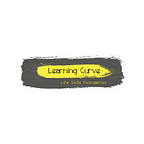I love teaching, but…
“Teaching truly is the ultimate act of optimism, believing in our children and through this faith in their ability, infusing them with the confidence to achieve.”
- Colleen Wilcox
Here is one common scenario we all might have heard or seen. Read through and I bet you would relate to it very well.
Teacher 1: Hi! I asked you to send the report to me two days ago, and you still haven’t gotten back to me.
Teacher 2: Hello Ma’am! I am sorry. I haven’t been feeling good for the past few days, and concentrating has become difficult.
Teacher 1: Is everything alright?
Teacher 2: I don’t know, Ma’am. I feel emotionally exhausted and drained from a few weeks. I can neither concentrate for long periods nor feel like coming to school to teach. I love teaching, and I can’t see myself doing anything else. But, every day I wake up, I feel like I am going to fight a war.
Teacher 1: That doesn’t sound so good. Why don’t you take a few days off? You might feel better.
Teacher 2: That is sweet of you to offer Ma’am, but there is a lot of work pending.
Teacher 1: Don’t worry about that. What you are experiencing is called burnout, and taking a few days off is extremely crucial to recover and rejuvenate.
Teacher 2: Okay Ma’am, Thank you.
A week later….
Teacher 1: Hi! Welcome back!
Teacher 2: Hello Ma’am! Thank you!
Teacher 1: How do you feel now?
Teacher 2: I feel much better now, Ma’am. Thanks for offering me the break. It really worked wonders.
Teacher 1: Great! Remember to take care of yourself.
Teacher 2: Yes Ma’am. I will. I consulted a Doctor over the week and realized that the problem was much more severe. I had been experiencing severe fatigue, and appetite loss as well. These were all symptoms that I had been ignoring.
Teacher 1: Oh! I had read about it too. We might be really passionate about teaching, but if we are burned out, we might end up doing more harm than good for students.
The above conversation is just one instance of professional burnout among teachers. This is the unfortunate truth of teaching today. Burnout is the physical and emotional exhaustion that results from excessive demands on energy, strength or resources (Freudenberger, 1977). Burnout comprises three components: emotional exhaustion, depersonalization, and reduced personal accomplishment. Emotional exhaustion is the state of feeling emotionally worn out and drained as a result of accumulated job stress. Depersonalization refers to the feeling of detachment from the job. Reduced personal accomplishment refers to feelings of incompetence and a lack of achievement and productivity in work.
According to the Job Demands-Resources model, excessive job demands for a long time leads to emotional exhaustion and a lack of job and personal resources reduces motivation and increases depersonalization.
So what can teachers do to reduce burnout? Are there any SEL techniques that might help?
As mentioned above, taking a break really helps with managing burnout. Apart from that, the following SEL techniques also help:
Identifying the Emotion: It is important to identify the emotion that one experiences. This helps in separating yourself from your emotions, in order to process them better. Once you learn to process your emotions, you will no longer feel emotionally drained or exhausted.
Self-Compassion: Learn to forgive yourself and prioritize yourself when things are getting out of control. One way to do so is by acknowledging and appreciating your strengths.
Mindfulness: Taking a moment and reflecting on your emotions helps when you are overwhelmed with emotions. Social-emotional learning activates the center of the brain, but when we are stressed, this activation doesn’t take place. Therefore, taking deep breaths and calming down helps you relax and reflect on your emotions.
Self-Care: Eating a nutritious diet, sleeping adequately and working out regularly, helps in releasing happy hormones, thereby reducing the amount of cortisol, the stress hormone. This further reduces the risk of developing cardiovascular problems and other physiological issues.
Change in perspective: Though the above-mentioned self-care techniques may help in relaxing, the problems may still continue to persist. Therefore, it is important to prioritize the tasks that are important, and that are exhausting to complete and further delegate menial tasks in order to focus on more meaningful work. This reduces the workload and helps one to focus on one thing at a time.
Practicing the above SEL techniques enables teachers to become more efficient, thereby promoting positive interactions and influencing a wide range of student-level outcomes. They create an optimal learning environment and promote active learning practices and adequate communication among students and between teachers and students.
‘Teacher Development and Support’ is one such social-emotional capacity-building program for teachers developed by Learning Curve Life Skills Foundation, Hyderabad, India. It is designed to support, develop and promote social-emotional well-being among teachers. The intervention was provided to teachers in Kasturba Gandhi Balika Vidyalayas and in Affordable Private Schools (APS) of Hyderabad. Results in both school categories showed that teachers were able to establish better student-teacher relationships and also manage classrooms better. There was improvement noticed in academic and social-emotional competencies of students too. Hence, the first step to teachers’ positive social emotional development is to believe that teachers like in any other profession need support to develop their social emotional competencies and deal with challenges they face in their professional life. Hence, a little support extended to teachers can go a long way in improving social emotional wellbeing of both teachers and children in the long run.
References:
Maslach, C. (2015). Burnout, Psychology of. International Encyclopedia of the Social & Behavioral Sciences, 929–932. https://doi.org/10.1016/b978-0-08-097086-8.26009-1
Shukla, A., & Trivedi, T. (2008). Burnout in Indian teachers. Asia Pacific Education Review, 9(3), 320–334. https://doi.org/10.1007/bf03026720
4 Steps to Beating Burnout. (2021, August 27). Harvard Business Review. https://hbr.org/2016/11/beating-burnout
Academy, M. (2022, April 9). How to Reduce Teacher Burnout with SEL Professional Development. Mayerson Academy. https://www.mayersonacademy.org/strong-schools/thriving-learning-communities/how-to-reduce-teacher-burnout-with-sel-professional-development/
